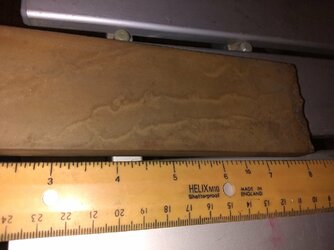Hit the local swap meets and antique shops, and just see what you can find for a good price, if you are not in a hurry. The amount of slates and true hard Arks that were sold back in the day, they do turn up fairly often if you look hard. Same with coticules really.
As you are new there will be an element of "pot luck" in the beginning, since the bargains are often dirty and can be hard to identify sometimes, but that is half the fun. And it is cool when you can find a $150, $200 stone hidden under the muck that you paid $20 for.
Whatever you find, learn to use that, until you find the next thing.
As you are new there will be an element of "pot luck" in the beginning, since the bargains are often dirty and can be hard to identify sometimes, but that is half the fun. And it is cool when you can find a $150, $200 stone hidden under the muck that you paid $20 for.
Whatever you find, learn to use that, until you find the next thing.


